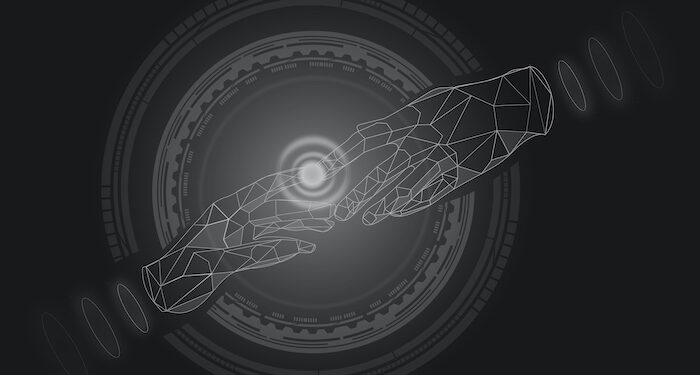A quiet crisis is unfolding in marketing. We’ve never had more data, tools, and technology at our disposal. Yet, somehow, brands are connecting less.
According to the 2024 Sprout Social Index, over 71% of consumers say they find most brand content “forgettable”. Even though global digital ad spend has increased by more than 10% year-on-year. Meanwhile, trust in brand communication continues to decline, especially among younger audiences who can spot inauthenticity faster than an algorithm can A/B test a headline.
In short, AI is making us faster and more efficient, but not necessarily better.
So what’s the problem? Efficiency is outpacing empathy
Marketers are under relentless pressure to produce more content, in more formats, across more channels. Often with fewer people and smaller budgets. So naturally, AI feels like salvation. It promises speed, scale, and cost-efficiency.
But there’s a catch, automation without intention leads to emptiness.
A 2025 Content Marketing Institute study found that while 65% of marketers now use AI tools to generate or optimise content, only 23% say it has improved audience engagement. Why? Because the more we automate, the more we risk stripping out the nuance, curiosity, and emotional resonance that make brands feel human.
Audiences aren’t rejecting technology, they’re rejecting meaningless noise.
We’ve entered an era of algorithmic sameness, where every brand sounds the same, looks the same, and posts the same AI-generated carousel about “10 Tips for This or That.”
And that sameness is killing distinctiveness.
So what needs to change?
The design shift: From tech process to presence
What we are witnessing unfold today in marketing (and likely society) isn’t a tech revolution; it’s a design failure that has not yet fully materialised and might only be felt years down the line.
But what’s unmistakable is this – the brands that thrive will be those that treat marketing as an experience system, not a content factory.
I call this shift ‘Presence Design’. The art of building digital systems that don’t just automate interaction, but amplify humanity.
And every framework, tool and metric must serve that design intent: to make the brand feel more alive, not more efficient.
Shift from performance to presence
The best brands are starting to realise that the next competitive edge isn’t just technological, it’s emotional intelligence.
Take LEGO, for example. Despite being a company steeped in nostalgia, it’s one of the most future-fit brands. Rather than chasing every AI trend, LEGO focuses on co-creation, imagination, and storytelling. It uses digital tools not to replace creativity but to supplement it. Turning customers into collaborators through immersive experiences like LEGO Ideas and LEGO Studio.
Contrast that with brands that have gone all-in on automation. Agencies flooding feeds with AI-written posts, chatbot-led support, and auto-generated ‘personalised’ offers that feel anything but personal. They may win the being top of the feed award and maybe some curiosity and likes, but end up losing true attention, and the customer’s heart.
Because in the age of AI, being human is the ultimate differentiation strategy.
So how do we build human brands in a machine-driven world?
The framework: Redesign marketing for meaning
Here’s a design thinking-inspired framework for marketers, leaders and entrepreneurs ready to rebuild their brand around what truly matters.
-
Empathise before you optimise
Instead of asking “How can AI make this faster?” ask “What problem is my customer actually trying to solve?”
AI can tell you what people do, but only empathy reveals why they do it.
Ground your strategy in real human insights before turning to automation.
-
Design for distinctiveness, not just data
Your brand is not a spreadsheet.
Use data as direction, not definition.
Brands that lead with creativity and cultural relevance outperform those that chase metrics alone. In fact, a 2023 Kantar study found that “brands with strong emotional distinctiveness are 3x more likely to drive long-term growth.”
-
Humanise the journey
Revisit every touchpoint, from ads to after-sales. And ask, does this feel like it was made by a human, for a human?
Design systems that scale empathy, not just efficiency.
Automation should amplify your people, not replace them.
-
Create with, not for
Involve your customers in your creative process. Co-create campaigns, invite feedback loops, and make them part of the brand’s evolution.
The more people feel seen in your brand, the more they’ll help build it.
-
Measure what matters
Move beyond CTRs and impressions. Track emotional resonance, trust, and advocacy.
Metrics that matter most are the ones that indicate meaning, not just motion.
Humanity is the new growth engine
AI isn’t the enemy. It’s a mirror, reflecting how well (or poorly) we understand the people we’re trying to reach.
As technology takes over more of the doing, leaders must focus on the meaning.
Because the future won’t belong to the brands that automate the fastest. It will belong to the ones that understand the human heart best.
The next few years will divide brands into two categories: Those that use AI to replace human creativity, and those that use it to reveal it.
Which side will you be on?
 Jody Daniels is a brand strategist, thought leader and business change agent. Daniels is currently strategy director of Mortimer Harvey and Rapt Commerce, and author of Deconstructing Design Thinking, helping organisations rethink how they design for growth, meaning, and human connection in an increasingly automated world. Follow Daniels for more insights in his newsletter, Cup of Jo Leadership Chronicle ,on Linkedin.
Jody Daniels is a brand strategist, thought leader and business change agent. Daniels is currently strategy director of Mortimer Harvey and Rapt Commerce, and author of Deconstructing Design Thinking, helping organisations rethink how they design for growth, meaning, and human connection in an increasingly automated world. Follow Daniels for more insights in his newsletter, Cup of Jo Leadership Chronicle ,on Linkedin.














